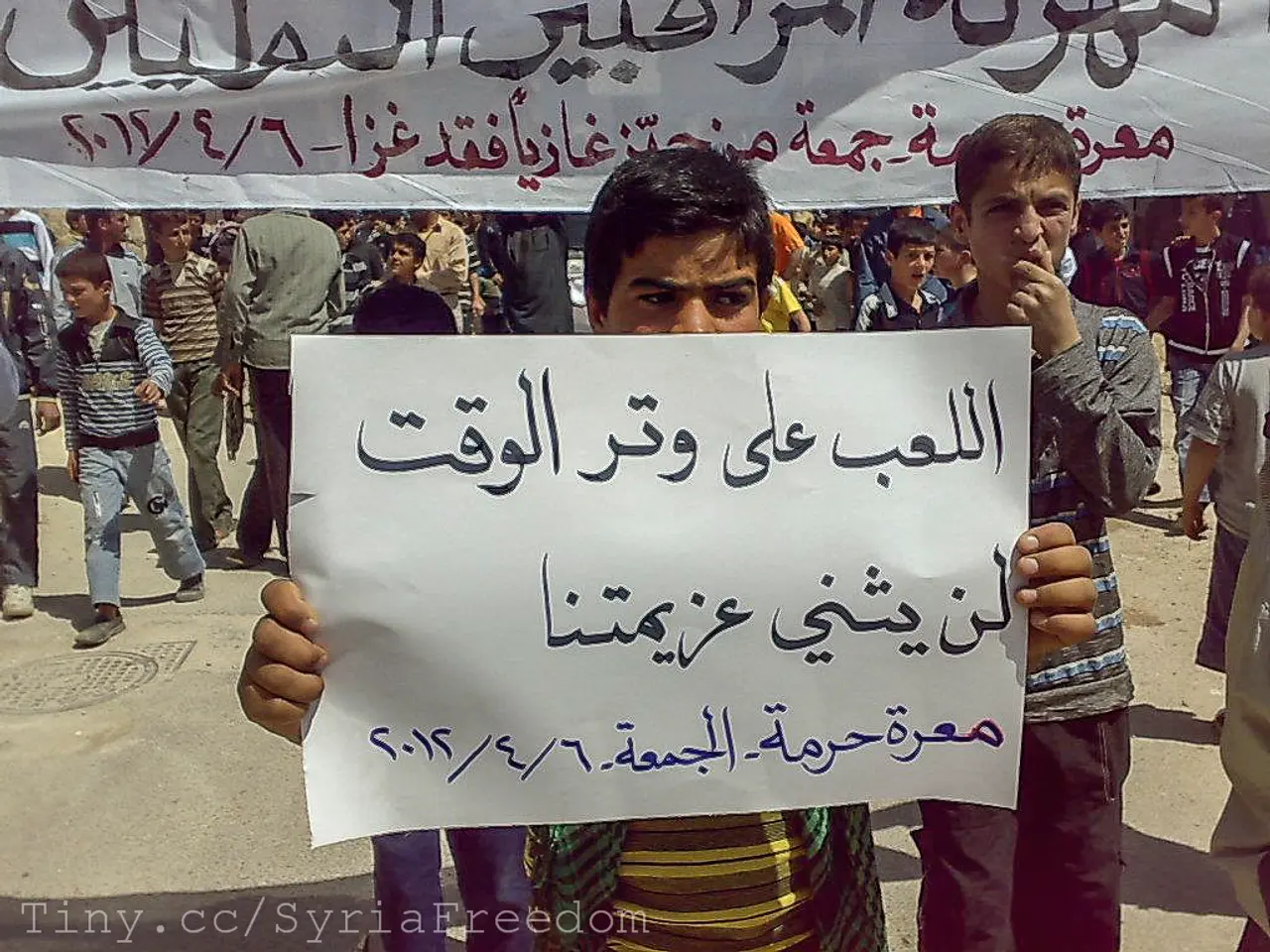Strip administration head acknowledges 75% control, suggests approaching juncture
In a recent field tour, Israeli Defence Force (IDF) Chief of Staff Lieutenant General Eyal Zamir visited the Gaza Strip, highlighting the critical and deteriorating situation in the region. Amidst ongoing military operations and a humanitarian crisis, the IDF continues its efforts to bring stability to the area.
The Israeli military has been conducting heavy bombardment and ground operations, particularly in northern Gaza, leading to a mounting civilian death toll. Since the conflict began on October 7, 2023, over 58,000 Palestinians have been reported killed and more than 138,000 wounded, according to Gaza’s Health Ministry.
The humanitarian situation in Gaza is rapidly collapsing. UN agencies warn of imminent operational failure due to extreme shortages of fuel, medicine, and food. As of mid-July 2025, only a fraction of hospitals and health centers remain partially functional, with 70% of essential medicines out of stock and critical shortages of medical equipment.
Aid delivery faces numerous challenges, with multiple layers of Israeli approvals, damaged infrastructure, and security risks delaying or blocking aid convoys. Fuel supplies allowed into Gaza remain critically low, insufficient even for ambulance services.
Over 737,000 people (about 35% of Gaza’s population) have been displaced since the escalation began in March 2025. Many displaced persons’ sites have been targeted by Israeli strikes, including a recent deadly attack on the only Catholic church in Gaza City, killing three and injuring others who were seeking sanctuary.
Water insecurity affects 95% of the population, forcing many, especially children, to consume contaminated water, increasing the risk of disease outbreaks.
The UN and humanitarian officials urgently call for a ceasefire, lifting of blockades, and uninterrupted humanitarian access to prevent complete collapse and further loss of civilian lives.
Despite these challenges, Zamir stated that the IDF will operate in additional areas and continue activities as before. If no deal is reached, Zamir's directive is to intensify and expand combat operations. As of now, the IDF has operational control of 75% of the Gaza Strip.
Zamir emphasized the symbolic importance of Hadar Goldin, who served in the Givati Brigade, and reiterated the obligation to bring him back, the last hostage from 2014 Operation Protective Edge. In recent weeks, the IDF has struck over 1,300 terrorists, including some Nukhba terrorists from October 7th.
During the field tour, Zamir spoke with Givati Brigade commanders and expressed appreciation for the activity of the troops. He stated that the goal is to ensure Gaza no longer poses a threat to Israel for generations. Zamir promised to continue striking terrorists relentlessly until the defeat and dismantlement of Hamas.
If a deal is reached, Zamir promised to pause and reposition along lines defined by the political echelon. The tour was attended by the Commander of the Southern Command, Major General Yaniv Asor, the Commander of the 162nd Division, Brigadier General Sagiv Dhan, and various brigade commanders. Zamir conducted a field observation of the combat in the Beit Hanoun area.
The ongoing war-and-conflicts in Gaza are deeply intertwined with politics, as the Israeli Defence Force (IDF) continues its heavy bombardment and ground operations, leading to a humanitarian crisis. General news outlets report that the IDF's efforts to bring stability to the region have resulted in over 58,000 Palestinians killed and more than 138,000 wounded since the conflict began.






